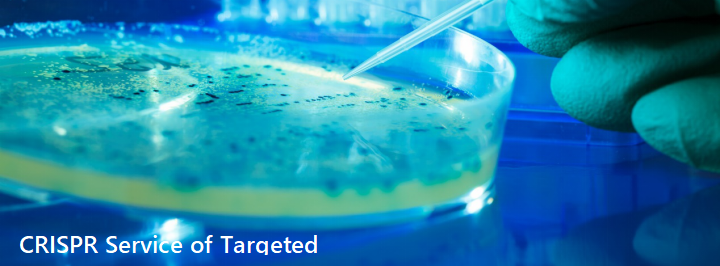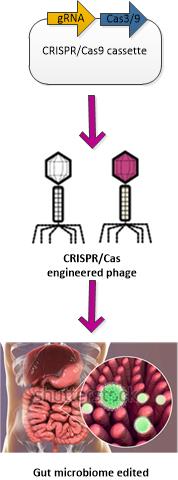The CRISPR/Cas system is originally discovered as the prokaryotic adaptive immune system to protect themselves against the invading of foreign viruses (such as bacteriophages). CRISPR/Cas system is a powerful gene-editing tool since its first successful utilization and then followed by a robust technological development and revolution period under the hard work of worldwide talented researchers. Although discovered in prokaryotes, the use of CRISPR achieved success mainly in the target of eukaryotic animals and plants.
More and more studies have found that commensal flora plays an important role in host health maintenance as the complex gut microbial community constitutes an in vivo micro-ecological balance through unique metabolites and plays an important role in host health and disease. These novel discoveries indicate that gut microbiome is a promising pathogenic and therapeutic target and hotspot in future applications. CRISPR/Cas systems can be delivered to gut bacterial community and programmed to specifically eliminate members of the microbiome. These tools provide exciting opportunities to investigate the intricate interplay between members of the gut microbiome and the host bodies and indicate new ways for the development of novel therapeutic strategies targeting the microbiome.
GutFlora Omics combines CRISPR/Cas system and λ-Red recombinant technology to make full use of targeted cleavage activity of the CRISPR/Cas system, together with the bacterial recombination activity of λ-Red to develop an efficient bacterial gene-editing strategy that can especially target your target microbe.
Figure 1. CRISPR strategies targeting the gut microbiome.1
GutFlora Omics provides professional microbial genome editing services for consultation, design, construction, and analysis of microbial engineering bacteria transformation.
Highlights of our CRISPR/Cas editing services:
Precise and efficient: Take advantage of CRISPR/Cas9 and λ-Red system
Seamless editing: easy screening, and no additional screening markers needed
Multi-gene-editing: up to 3 genes edited simultaneously
Reference
1. G. Ramachandran, and D. Bikard, 'Editing the Microbiome the Crispr Way', Philos Trans R Soc Lond B Biol Sci, 374 (2019), 20180103.
*For Research Use Only. Not for use in diagnostic procedures.



